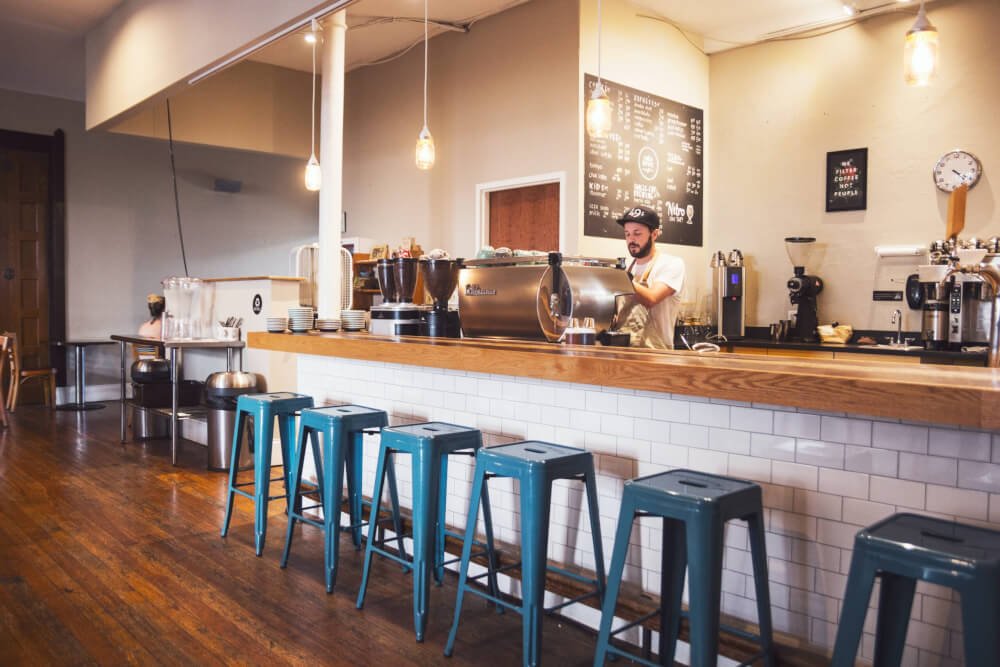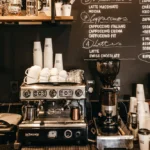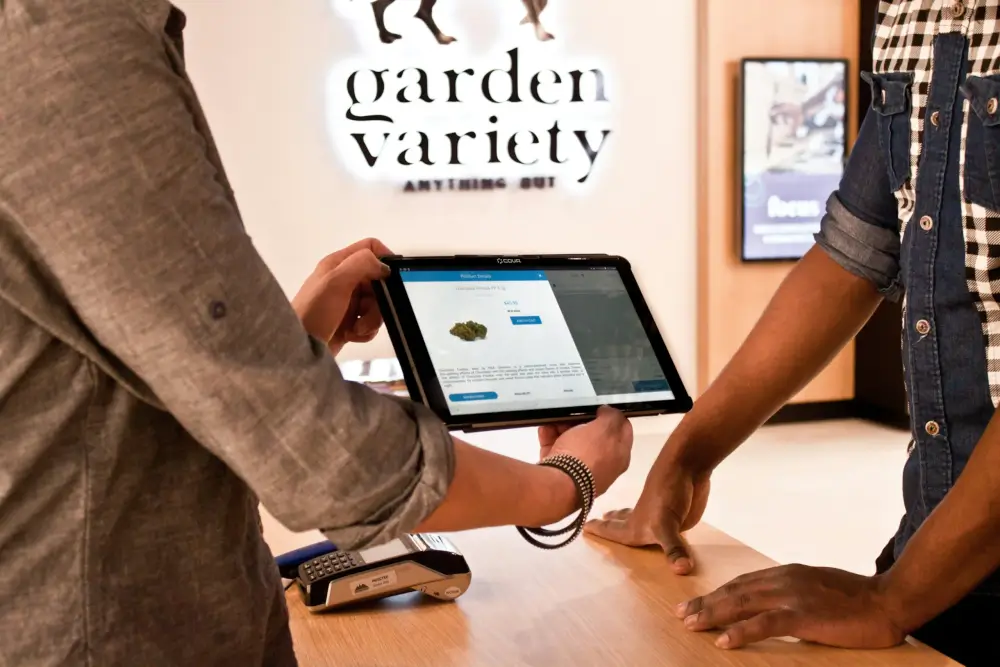Starting a small coffee shop can be an exciting and rewarding venture. Not only do you get to share your love for coffee with others, but you also have the opportunity to create a cozy and inviting space for people to gather and socialize. However, like any business, there are certain challenges and obstacles that come with starting a coffee shop.
One of the most important things to consider is the use of a POS system.
The right POS system is crucial in planning your coffee shop budget, as it serves as the operational backbone, crucially enhancing operational efficiency and customer satisfaction in every aspect of the business.
Ajay Reddy – SAYGE – POS Expert
In this article, we will discuss the best tips to start a small coffee shop and the importance of a POS system in running a successful business.
Overview of Key Points to start a Cafe
| Key Point | Insight & Importance |
|---|---|
| Solid Business Plan | Essential for guiding decisions and securing funding. Focuses on market analysis, competitive landscape, financial goals, and operational strategies. |
| Right Location | Critical for accessibility and foot traffic. Involves demographic analysis, visibility, and consideration of local regulations. |
| Quality Equipment | Directly impacts coffee quality and service efficiency. Includes espresso machines, grinders, and blenders. |
| Inviting Atmosphere | Key to customer experience. Involves lighting, seating, decor, and music. |
| Diverse Menu Options | Attracts a broader audience. Include pastries, sandwiches, teas, and non-coffee beverages. |
| Trained Staff | They represent the business. Training in coffee making, customer service, and POS system operation is vital. |
| Efficient POS System | Streamlines transactions, manages inventory, and integrates with online ordering. |
| Loyalty Programs | Encourages repeat business and gathers customer data. |
1. Create a Solid Business Plan
Before diving into any business venture, it is crucial to have a well-thought-out and detailed business plan. This includes identifying your target market, researching the competition, and setting financial goals. A solid business plan will not only guide your decisions but also help you secure funding if needed.
A business plan should begin with a comprehensive market analysis. This involves identifying potential customers, understanding their needs and preferences, and analyzing market trends. For example, if you’re planning to open a coffee shop, consider factors like local coffee drinking habits, the presence of competitors, and emerging trends in the coffee industry such as the growing demand for organic or specialty blends.
Understanding these elements can help tailor your business to meet specific market needs.
Next, a detailed competitive analysis is vital. Examine your main competitors, their strengths and weaknesses, and how your business can differentiate itself. Take a local bakery as a case study; what products are they offering that you aren’t? Is there a gap in the market for gluten-free or vegan options that you could fill? Analyzing competitors helps in carving out a unique position in the market.
Setting realistic financial goals is another cornerstone of a successful business plan. This includes creating revenue projections, estimating startup and operational costs, and determining break-even points.
For instance, a tech startup might project its revenue based on potential subscription models, advertising income, or service fees. It should also include a contingency fund for unforeseen expenses, a critical aspect often overlooked.
Additionally, a business plan should outline the organizational structure and operational strategies. Define roles and responsibilities, needed skill sets, and hiring plans. For instance, a retail store might need to plan for sales staff, inventory managers, and marketing personnel.
This clarity helps in efficient management and smooth operation from the get-go.
Lastly, your business plan should include a marketing and sales strategy. This involves deciding on branding, advertising methods, sales channels, and customer engagement strategies. For example, an online clothing store needs to decide on its e-commerce platform, social media marketing strategies, customer loyalty programs, and sales promotions. A well-rounded marketing strategy ensures that the business effectively reaches its target audience and achieves its sales goals.
In conclusion, a solid business plan is a roadmap to success. It requires a deep dive into market analysis, competitive landscaping, financial planning, operational structuring, and marketing strategies. By meticulously planning each aspect, you lay a strong foundation for your business venture, increasing its chances of thriving in a competitive environment.
2. Choose the Right Location
Location is key when it comes to starting a coffee shop. You want to choose a location that is easily accessible, has a good amount of foot traffic, and is in an area with a high demand for coffee. Consider renting a space in a busy shopping center, near a college campus, or in a business district.
When selecting a location, it’s important to conduct a thorough demographic analysis. This involves understanding the population in the area, their lifestyle habits, and income levels. For instance, a location near a university might cater to students who prefer quick service and affordable options, while an upscale neighborhood might have customers looking for high-end, artisanal coffee experiences. Understanding these nuances can guide you in tailoring your coffee shop to the preferences of the local community.
Visibility and accessibility are also critical factors.
A coffee shop located on a main road or at a street corner with high visibility can attract more customers than one tucked away in a back alley. Easy accessibility for both pedestrians and vehicles, along with ample parking space, can significantly enhance customer convenience and, in turn, business turnover.
The proximity to complementary businesses can be beneficial. Being near a bookstore, a university, or office buildings can create a steady stream of potential customers. For example, placing your coffee shop near a popular bookstore could attract book lovers looking for a place to read and relax with a cup of coffee. Collaborations with neighboring businesses for cross-promotions can also be a strategic move.
Rent and operational costs in relation to potential revenue must be considered. While a prime location in a bustling area might promise more foot traffic, it also comes with higher rental costs. It’s crucial to balance the location’s potential for revenue generation with the overhead costs to ensure profitability.
Lastly, local regulations and zoning laws should be examined. Certain areas may have restrictions or specific requirements for food and beverage establishments. Ensuring compliance with these regulations from the outset can save time and avoid legal complications down the road.
In conclusion, choosing the right location for a coffee shop involves a multifaceted approach that considers demographics, visibility, accessibility, neighboring businesses, cost-effectiveness, and regulatory compliance. A strategically chosen location can significantly contribute to the success and growth of your coffee shop.

3. Invest in Quality Equipment
Investing in quality equipment is essential for a small coffee shop. This includes a commercial-grade espresso machine, coffee grinders, blenders, and other necessary items. These may be expensive upfront costs, but they will save you money in the long run by reducing maintenance and replacement costs.
The choice of a commercial-grade espresso machine is crucial as it directly impacts the quality of the coffee served. High-quality machines ensure consistent temperature and pressure control, which are vital for extracting the perfect espresso.
For instance, choosing a machine with dual boilers can allow for simultaneous espresso shots and milk steaming, increasing efficiency during peak hours. Additionally, machines with programmable settings can maintain consistency in coffee quality, regardless of who operates the machine.
Coffee grinders are another vital investment. Freshly ground coffee beans make a significant difference in flavor and quality. Investing in a grinder that offers a range of settings can allow for the precise grinding needed for different types of coffee, from fine espresso to coarse French press. Burr grinders, for example, provide a more consistent grind size compared to blade grinders, enhancing the overall taste and quality of the coffee.

Including high-quality blenders is important for expanding the menu to include blended coffee drinks and smoothies. A durable, high-power blender can efficiently handle frequent use and a variety of ingredients, from ice to frozen fruits, which is essential for a diverse and appealing menu.
Additional equipment such as a water filtration system can also be a wise investment. Good quality water is essential for brewing excellent coffee, and a filtration system can ensure a consistent water quality, free from impurities that can affect the taste of the coffee.
Regular maintenance is key to prolonging the life of your equipment.
Establishing a routine cleaning and maintenance schedule can prevent breakdowns and ensure your equipment runs efficiently. This might involve daily cleaning of the espresso machine and grinders, along with regular servicing by a professional.
In conclusion, investing in quality equipment is a pivotal decision for a coffee shop. It’s not just about making a one-time purchase; it’s about choosing equipment that will consistently produce high-quality drinks, withstand frequent use, and reduce long-term costs associated with maintenance and replacements. This investment is a testament to the commitment to quality that customers will appreciate and pay off in the form of customer loyalty and a solid reputation.
4. Create an Atmosphere
A coffee shop is not just about the coffee; it’s also about the atmosphere. Make your space inviting and cozy by using warm lighting, comfortable seating, and some greenery. Play some soft music in the background to create a relaxing ambiance for your customers.
The design and decor of your coffee shop play a significant role in creating an inviting atmosphere.

Choose a theme or style that reflects the personality of your brand and resonates with your target clientele. For instance, a vintage theme with antique furniture and classic decor can attract customers looking for a nostalgic experience, while a modern, minimalist design might appeal to a younger, trendier crowd. The key is to create a unique and memorable space that stands out from competitors.
Lighting is another crucial element in setting the right mood. Soft, warm lighting creates a welcoming and comfortable environment, ideal for customers who want to relax or work. Consider using a mix of overhead lights, table lamps, and accent lighting to create a balanced and visually appealing space. Natural lighting can also be a big draw, so make the most of windows and outdoor seating if possible.
Comfortable seating is essential for encouraging customers to stay longer and potentially purchase more. Offer a variety of seating options, such as couches for groups, individual armchairs for solo visitors, and bar stools for quick stops. The layout should facilitate easy movement while providing cozy nooks for those seeking a bit of privacy.
Incorporating greenery can greatly enhance the ambiance. Plants not only improve air quality but also add a vibrant, calming touch to the decor. From small potted plants on tables to larger floor plants or a living wall, greenery can transform the feel of the space.
Background music is an effective way to create a relaxing or energetic atmosphere, depending on your clientele’s preferences.
A carefully curated playlist that aligns with your brand’s image can significantly enhance the overall customer experience. Consider the volume and genre of music, ensuring it complements rather than overpowers the ambiance.
In conclusion, creating the right atmosphere in a coffee shop involves thoughtful consideration of design, lighting, seating, greenery, and music. An inviting and comfortable environment not only attracts customers but also encourages them to stay longer and return. It’s about offering an experience that goes beyond just a cup of coffee, making your coffee shop a destination in its own right.
5. Offer a Variety of Options
While coffee is the main attraction, it is essential to offer a variety of options to cater to different tastes and preferences. Consider offering a selection of pastries, sandwiches, teas, and other non-coffee beverages. This will not only attract a wider range of customers but also increase your sales.

Expanding the menu to include food items can significantly enhance the customer experience. From freshly baked croissants and muffins to healthy wraps and salads, a diverse food menu can cater to various dietary needs and meal times.
For instance, offering gluten-free or vegan options can appeal to health-conscious customers. Also, consider including local specialties or seasonal items to keep the menu fresh and exciting.
Teas and non-coffee beverages are important for non-coffee drinkers. A selection of herbal, green, and black teas, along with specialty drinks like matcha or chai lattes, can cater to tea enthusiasts. Additionally, offering smoothies, fresh juices, and soft drinks can appeal to children and adults alike, making your coffee shop a family-friendly destination.
Creating a welcoming space for all types of customers, including those who prefer alternatives to coffee, can significantly expand your customer base. By diversifying your offerings, your coffee shop can become a versatile spot for a wider audience, enhancing its appeal and profitability.
6. Train Your Staff
Your staff is the face of your coffee shop, so it is crucial to train them to provide excellent customer service. They should be knowledgeable about the different types of coffee and beverages you offer, and be able to make recommendations to customers. They should also be trained on how to use the POS system effectively.

Investing in comprehensive barista training is essential. This should cover not only the basics of coffee brewing but also advanced techniques for creating a range of coffee drinks, from classic espressos to specialty lattes. Staff should be familiar with the origins and flavor profiles of different coffee beans, enabling them to educate and engage with customers about their choices.
Customer service training is also crucial. Staff should be trained in communication skills, handling difficult situations, and maintaining a friendly, welcoming demeanor. This includes training on handling rush hours efficiently, managing customer queues, and providing quick, accurate service. The goal is to create a positive and memorable experience for every customer who walks through the door.
Additionally, familiarization with the POS system and inventory management is necessary for efficient operation. Staff should be trained to handle transactions smoothly, manage orders accurately, and be aware of inventory levels to avoid running out of popular items.
7. Invest in a POS System
A POS (Point of Sale) system is software that helps businesses manage their sales and transactions. In a coffee shop, it is essential to have a POS system as it not only helps with processing payments but also tracks inventory, manages employee schedules, and generates reports. A modern POS system can also be integrated with online ordering and delivery platforms, making it easier for customers to order from your coffee shop.
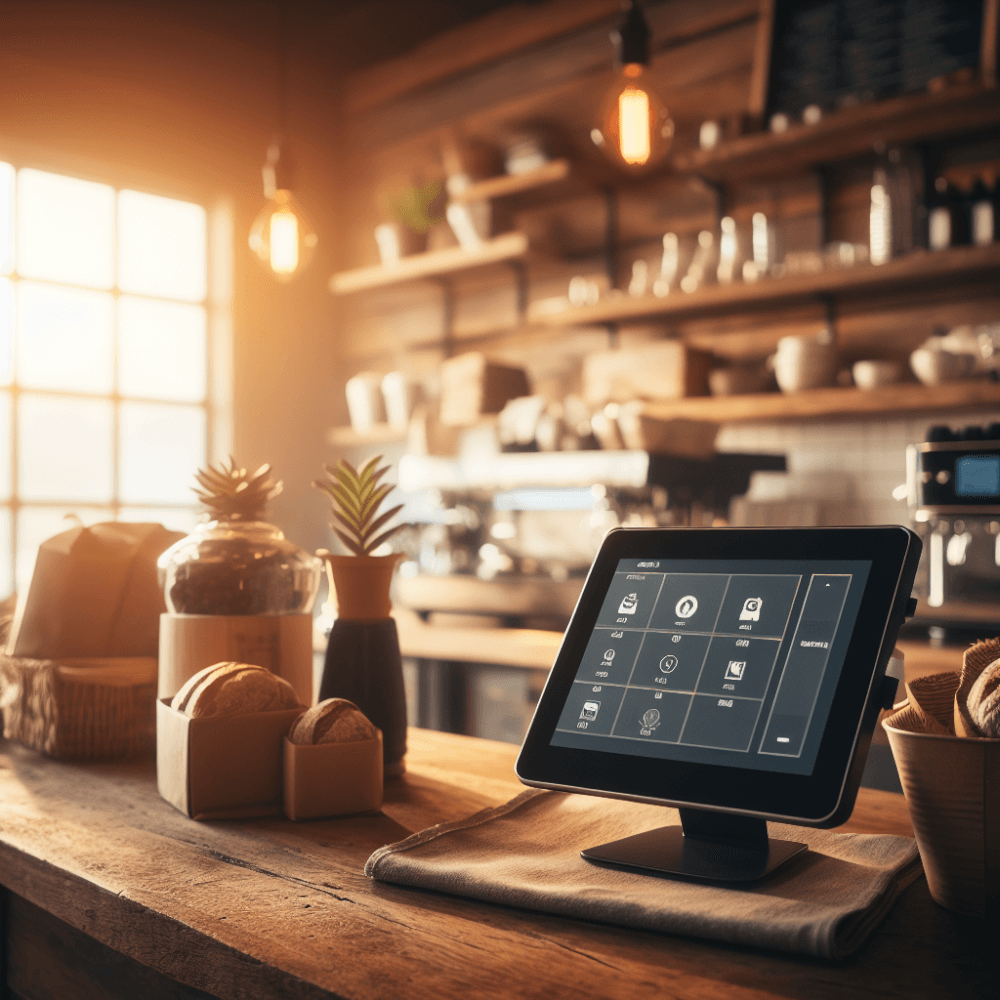
Choosing the right POS system is vital. Look for features like inventory tracking, which can help you keep track of stock levels and order supplies before running out. Additionally, a system that offers customer management features can help in creating personalized marketing strategies and understanding customer preferences.
Integration with online ordering and delivery platforms is increasingly important in today’s digital age. A POS system that syncs with platforms like Uber Eats or DoorDash can open up additional revenue streams and cater to the growing demand for coffee delivery and online ordering.
Furthermore, advanced POS systems can provide valuable analytics and reports, offering insights into sales trends, peak business hours, and customer demographics. This data can be instrumental in making informed business decisions and strategizing for growth.
8. Offer Loyalty Programs
To attract and retain customers, consider offering loyalty programs such as a punch card or a digital rewards system. This will not only encourage customers to come back but also help you gather data on their preferences and habits.

Loyalty programs can take various forms, from traditional punch cards where customers get a free drink after a certain number of purchases to digital loyalty apps that offer rewards, discounts, and personalized offers. These programs not only incentivize repeat visits but also create a sense of belonging among customers.
Moreover, a digital loyalty program can enhance customer engagement. By offering personalized rewards and notifications about special offers or new menu items, you encourage customers to interact more frequently with your brand. This increased engagement can foster a stronger sense of community and brand loyalty, which is invaluable for a coffee shop striving to build a loyal customer base.
Furthermore, digital systems often allow for seamless integration with social media and email marketing, enabling you to extend your reach and promote your loyalty program through various online channels. This integrated approach can attract new customers while keeping existing ones engaged with your brand.
In conclusion, a digital rewards system does more than reward repeat customers; it’s a strategic tool for understanding and growing your customer base, enhancing engagement, and integrating your marketing efforts across different platforms. For small coffee shops looking to establish a robust presence in a competitive market, such a system is an essential component of a comprehensive business strategy.
The Benefits of Choosing SaaSify POS for Small Coffee Shops
For small coffee shop owners looking for an efficient, user-friendly, and cost-effective POS system, SaaSify POS stands out as an excellent option. Tailored specifically for the needs of burgeoning cafes, SaaSify POS offers a range of features designed to streamline operations, enhance customer service, and grow your business. What makes it even more appealing is that it’s available for a free trial, allowing you to experience its benefits firsthand without any initial investment.
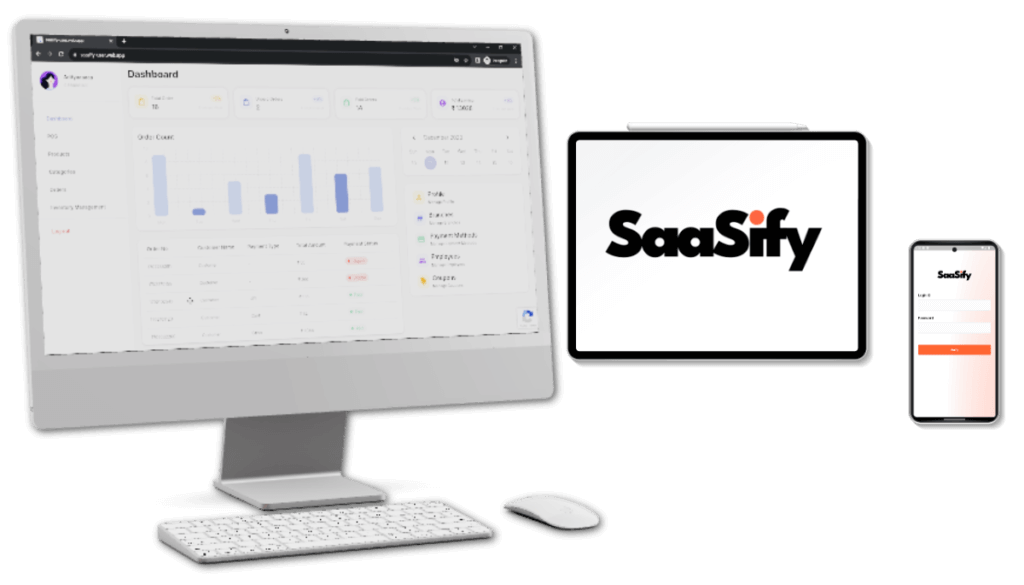
User-Friendly Interface for Easy Operation
SaaSify POS boasts a straightforward and intuitive interface, making it easy for staff to quickly adapt and use efficiently. This user-friendliness is crucial for small coffee shops where fast service and minimal training are key. The system’s simplicity ensures that new employees can be onboarded with ease, reducing training time and costs.
Inventory Management Tailored to Coffee Shops
Effective inventory management is vital for any coffee shop. SaaSify POS provides detailed inventory tracking that alerts you when supplies are running low, ensuring you never run out of essential items like coffee beans or pastries. This feature helps in maintaining consistency in service and reduces the risk of lost sales due to stockouts.
Seamless Integration with Online Ordering
In the age of digital convenience, SaaSify POS seamlessly integrates with online ordering platforms. This integration allows customers to place orders through their smartphones or computers, catering to the growing demand for online and mobile ordering options. This feature not only expands your customer base but also streamlines the ordering process, reducing wait times and enhancing customer satisfaction.
Valuable Analytics for Strategic Decision-Making
SaaSify POS comes equipped with analytics and reporting tools that provide insights into sales trends, peak hours, and customer preferences. These data-driven insights can guide you in making informed decisions about menu changes, marketing strategies, and operational improvements, ultimately aiding in the growth and success of your coffee shop.
Affordable and Scalable
Designed with small businesses in mind, SaaSify POS is not only affordable but also scalable. As your coffee shop grows, SaaSify POS can adapt to your changing needs, ensuring that your POS system grows with your business. This scalability means that you won’t need to switch systems as you expand, providing continuity and stability in your operations.
Free Trial for New Coffee Shop Owners
Understanding the financial constraints of new business owners, SaaSify POS offers a free trial, allowing you to test its features and compatibility with your business model. This risk-free opportunity is ideal for small coffee shop owners looking to find a POS system that aligns perfectly with their business needs and goals.
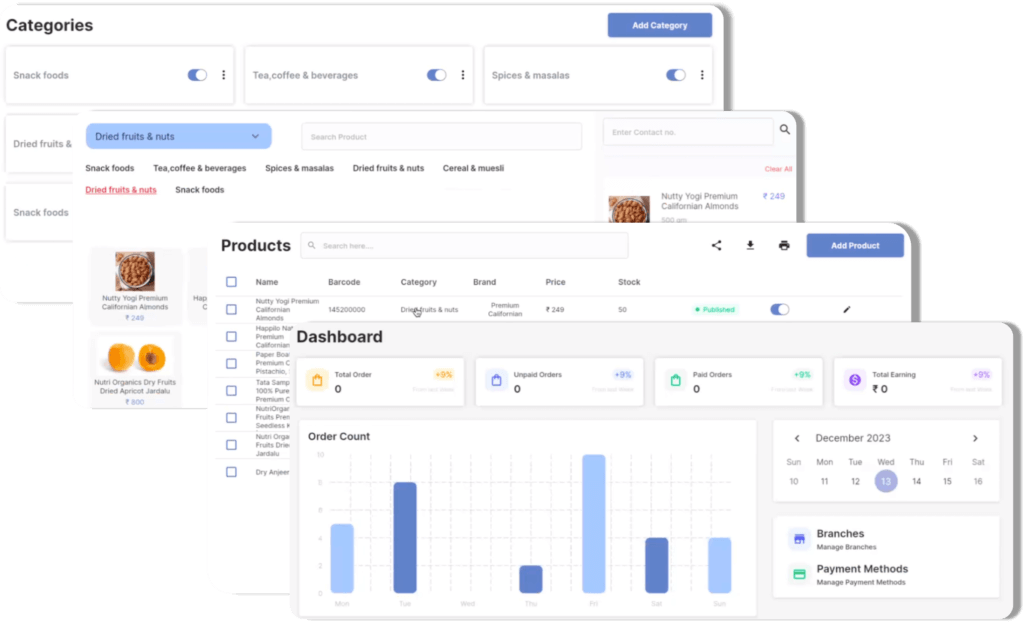
In conclusion, SaaSify POS provides an array of features and benefits perfectly suited for small coffee shops. Its user-friendly design, effective inventory management, integration capabilities, insightful analytics, scalability, and a free trial option make it an outstanding choice for entrepreneurs embarking on their coffee shop journey. Check out SaaSify POS today and take the first step towards streamlining your business operations and boosting your growth.
Start with SaaSify POS
Request your personal Demo
Requesting a demo of our state-of-the-art POS software is your first step towards streamlining your business processes, enhancing customer satisfaction, and boosting your sales.

It’s a product built not just with code, but with a dedication to enrich your business, ease your daily tasks, and help you grow. We are proud to present this to you and look forward to being a part of your journey to success.
— Rucha Wajpe, Developer
POS Details
User-Friendly Interface
Inventory Management
Sales Reporting and Analytics
Customer Management
Employee Management
